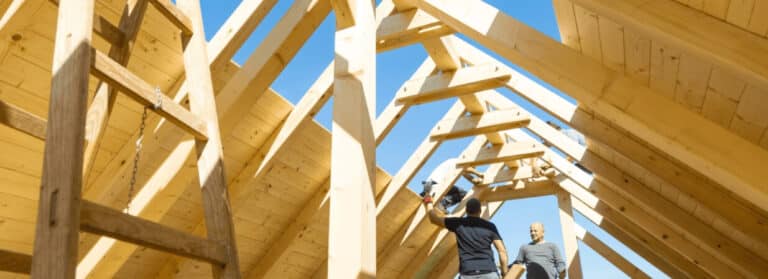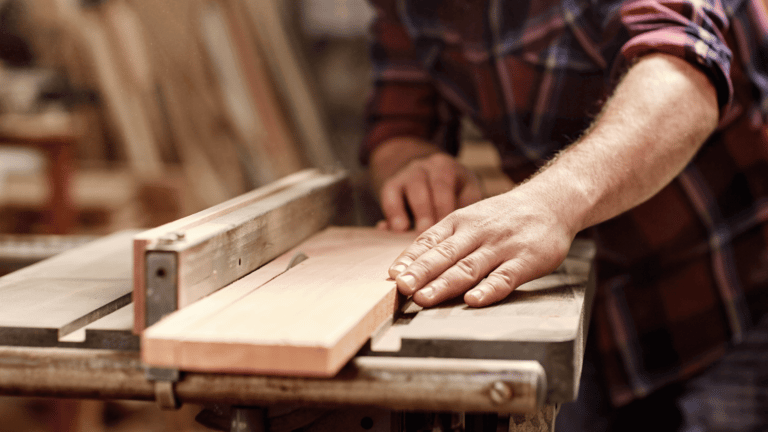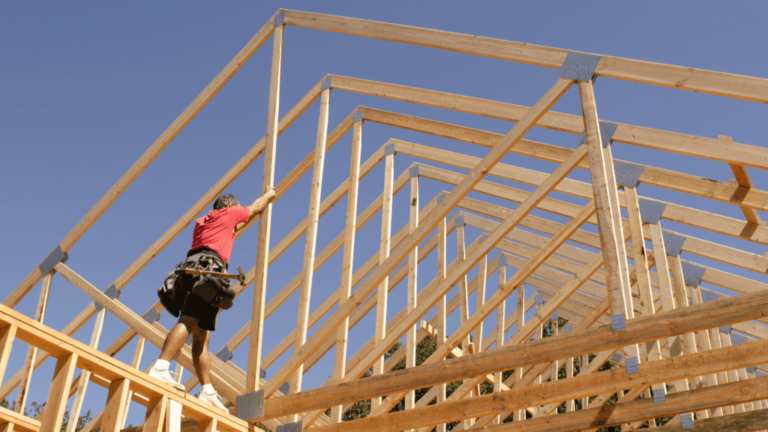Among the most significant changes in the construction industry in the past year have been the massive hike in building material prices and the overall construction cost of a building a home.
The rise in construction prices has contributed to significant construction material shortages, leading to enormous delays and even the cancellation of home projects by multiple contractors.
But what is set to change in the coming year, if anything? Will the industry see a reprieve, or will construction costs climb unabated?
Rising material costs felt across the market
Unfortunately, the rising cost of just about everything has caused a massive stall over the summer as inflation tightened its grip on the Australian construction industry. The slowdown follows an enormous boom in the construction market before mid-2022. At that time, folks used COVID relief funds to invest in properties – property acquisition exploded, up 56% on the previous year.
No matter what part of the home construction industry, building material prices skyrocketed this year. The steelmaking industry saw a massive 42.1% increase in cost, followed by timber at 20.1%; up over 10% were electrical, plumbing, glass product and aluminum.
Why are building material prices rising?
Building industry material prices across the construction industry have skyrocketed for a few reasons. Whether you’re talking about concrete blocks, gypsum sheets, or even laminate flooring, prices are up. Experts see some consistent reasons why building material prices have risen steadily.
Shortages
There’s been a general shortage of raw materials across the construction industry. A rush on the housing market has primarily caused this, followed by the inability of Australia to produce its materials, which results in the sky-high price of importing materials.
For example, steel has a price increase that has left customers uneasy. The lack of iron ore production in China, upon which Australia depends for its steel-making material, further compounds already rising steel prices.
Other shortages include sand in the country’s southwest. Used as an aggregate for concrete, sand shortages cause supply chain distribution issues in the concrete industry that drive up the cost of houses. As a result, Australian building supply companies must increase their overheads that pass on to the customer.
Volatility of material prices
One of the most significant factors contributing to housing shortages in the market has been the volatility of material costs. In particular, there have been increases in the cost of lining walls, including the cost of sheetrock and gypsum sheets.
As the unpredictable nature of the global economy continues, with inflation biting hard, the cost of materials appears in a near-constant state of ebb and flow, which isn’t good for construction costs in any part of the supply chain – from the source to the end-user.
What are the cheapest building materials right now?
Concrete and concrete products represent the lowest overall increase in building materials in 2022. The average cement block price in Australia is $2.98+GST per unit.
The next-cheapest material is cement – with cement products making up only a 7.1% increase in material costs.
Producer Price Indexes (PPI)
What are Producer Price Indexes?
Producer price indexes are cost comparisons curated by the Australian Bureau of Statistics. The ABS releases this data annually to reflect the change in price from when a product leaves the manufacturer and begins its journey until it reaches the end consumer.
Key statistics
A few key statistics encapsulate the current state of the Producer Price Index and give some idea of the state of the costs-of-production for multiple producers across the construction industry.
- Input prices have risen by 2.9% in house construction, which means that it costs, on average, almost 3% more to put products into building a home.
- Over the last 12 months, input prices have risen by 16% across the construction industry.
- Timber prices, board and joinery (wood product) have increased by 2.8%. Timber-framed windows have increased by 6.8%.
- Aluminum windows and doors are up by 3.8%. Meanwhile, other metal products have increased by 3.5%
- Plaster products have increased by 3.0%.
Building costs crisis and increased prices
Australians now face some of the worst building costs in the country’s history. And price increases are not set to slow down anytime soon. August reporting indicated that soaring building material prices caused house-building prices to increase by almost $80,000.
Shortage of materials
Material shortages contribute to this. For example, wildfires have knocked off native supply of basic building materials. This has caused losses of an estimated $600M worth of native timber, the building blocks of most Australian homes. Timber shortages have led to increasing costs for available product.
Other material shortages, such as previously mentioned steel have been blamed on the war in Ukraine, China’s economic downturn and the lack of iron ore mining. This has left Australian construction companies with no choice but to import steel, which has caused massive price increases to the end-users build cost.
Labour shortages
The new report, 2022 Arcadis Construction, predicts 100,000 unfilled skilled labour roles by 2023, and according to the Housing Industry Association, labour shortages will only grow worse. Other statistics indicate that Australia’s greatest skilled-labour need is construction management. The direst shortages in the industry are civil, electrical, mechanical engineers and surveyors – another critical part of the home building process.
How construction companies cope with price changes
Given that the country faces a considerable housing shortage and those building companies that haven’t been forced to shut down still need to do the work regardless, how are they coping with the exorbitant price changes in the industry?
Shop around
When you’re shopping for something and see a price you don’t like, you shop around until you find the product in a price range that works for you. Construction companies are doing the same.
Before, construction companies would have the luxury of choosing from domestic suppliers of certain materials. Things like PVC ceiling board pricing – made partially from gypsum, was previously created in Australia in the necessary quantities for demand. Unfortunately, like many other building materials, Australian construction companies must shop for the best price for their bottom line.
Minimise wastage
This has led Australian construction companies to seek new ways to use different materials and ensure that they order what they need for a job. Philosophies like “measure twice, cut once” are heavily employed on job sites to reduce material waste and rely on better technology to provide accurate measurements. This includes the use of technology such as digital blueprinting software.
Look for alternate materials
Supply chain issues have made the use of commonplace materials sometimes impossible, so companies have had to get creative and use alternative materials that are more readily available.
Given the intense environmental impact of currently-popular construction materials, it’s no wonder that industries are looking for alternative ways to deliver to their customers.
Alternate materials can even be used for larger projects – with timber skyscrapers built from the inside out becoming popular in Australian cities, reducing the load on concrete and steel workers and their increasingly-strained supply chains.
Manage building material prices with software
To save vast amounts of time and money, Australian construction companies are also turning to technology to do their inventory of materials. Given that the computer doesn’t lie and doesn’t make mathematic mistakes, inventory management software represents the way of the future for Australian construction.
Buildxact is one such software, a construction management software uniquely designed for residential builders and trades to help them manage projects more easily.
Key features include job management with equipment tracking, profit insights, benchmarking, project scheduling and quote management; and Supplier Connection which allows you to provide faster quotes and win more jobs by facilitating faster collaboration and more accurate pricing.
Improve the accuracy of estimates
A construction company’s estimate can be the difference between its quote being accepted or rejected. Given that the company knows the state of the industry beforehand, it has to vastly improve the accuracy of its estimates to ward off competition. Given the industry’s material shortages, construction companies are going to ensure that their estimates are accurate and they’re not over or under estimating material cost.
Track costings
When cost is as unpredictable as it currently is in the Australian construction business, keeping track of every penny is even more important for businesses. This means utilising technology to track costings and make cost analyses of projects, before Australian construction businesses quote on projects.
“Pick your battles” seems to be the order of the Australian construction business at the moment. Every piece of material is itemised into a construction materials price list in order for companies to better keep track of their expenditures.
How much does it cost to build a new home in 2022?
Building a new home is a big task for construction companies and the prospective homeowners alike, but with the cost of materials on the up-and-up, it will cost somewhere between $1,300 and $3,900 per square metre, depending on the number of rooms and the cost of materials at the time – building material prices have risen more than 16% in the last year.
How to manage delays and shortages
Managing delays and shortages can be a real challenge for construction companies. Customers have paid them to deliver a specific product in a specific timeframe and if they’re late on delivering that end product – it doesn’t look good on their company’s reputation.
Due to rampant insolvency within the industry, builders left a record number of homes unfinished this year. The Australian Bureau of Statistics reported 241,396 unfinished homes in June of 2022.
Managing delays and shortages comes down to be honest with clients and crucially providing alternatives to their preferred building materials, if there is a significant delay in acquisition.
Will building costs go down in 2023?
There’s plenty of market uncertainty ahead in 2023, however, the pace of increased costs should slow down slightly, with decreases of between six, four and three percent in the Gold Coast, Melbourne and Sydney respectively. This flows from what some experts see as easing pressure on global supply chains and increasing stability to a construction industry starved of good news of late.
Learn more how software can help manage rising material building costs
Today, builders like you use modern software to keep up with the latest material prices. Buildxact offers an all-in-one platform for takeoffs, estimating, quoting and job management.
Learn more about Buildxact pricing, or begin working today with a Buildxact representative. Book a demo or start working with Buildxact right away with a 14-day risk-free trial.


























